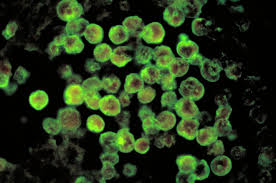Primary Amoebic Meningoencephalitis:

Kerala’s health department has sounded an alert in Kozhikode district after three back to back cases of the rare Primary Amoebic Meningoencephalitis (PAM) were reported in the region.
- It is an infection of the brain and the membranes covering the brain.
- It is caused by Naegleria fowleri, known as the “brain eating amoeba”.
- Naegleria fowleri is a free-living amoeba found in warm, fresh water and soil, and infects people when it enters the body through the nose.
- This is a very rare, but serious disease with a mortality rate of more than 95%.
- It affects mainly young, active people.
- It is classified into two main types: Primary Amebic Meningoencephalitis (PAM) and Granulomatous Amebic Encephalitis (GAE).
- PAM is caused by Naegleria fowleri, while GAE is typically associated with Acanthamoeba species and Balamuthia mandrillaris.
- PAM tends to progress rapidly and is often fatal within a few days, whereas GAE develops more slowly but is equally deadly if not treated promptly.
- The amoeba that causes the infection occurs in shallow surface waters and incorrectly maintained swimming pools, hot tubs, and spas, particularly in warm climates.
- Infection occurs when infected water enters the nose. This can happen when diving, jumping, or swimming in freshwater.
- The amoeba then invades the brain and meninges through the nose.
- Symptoms: sore throat, headache and pain in the forehead, hallucinations, nausea and vomiting, high fever etc.
- Treatment: Swift diagnosis and treatment with specific antibiotics may be useful, but recovery is rare.




